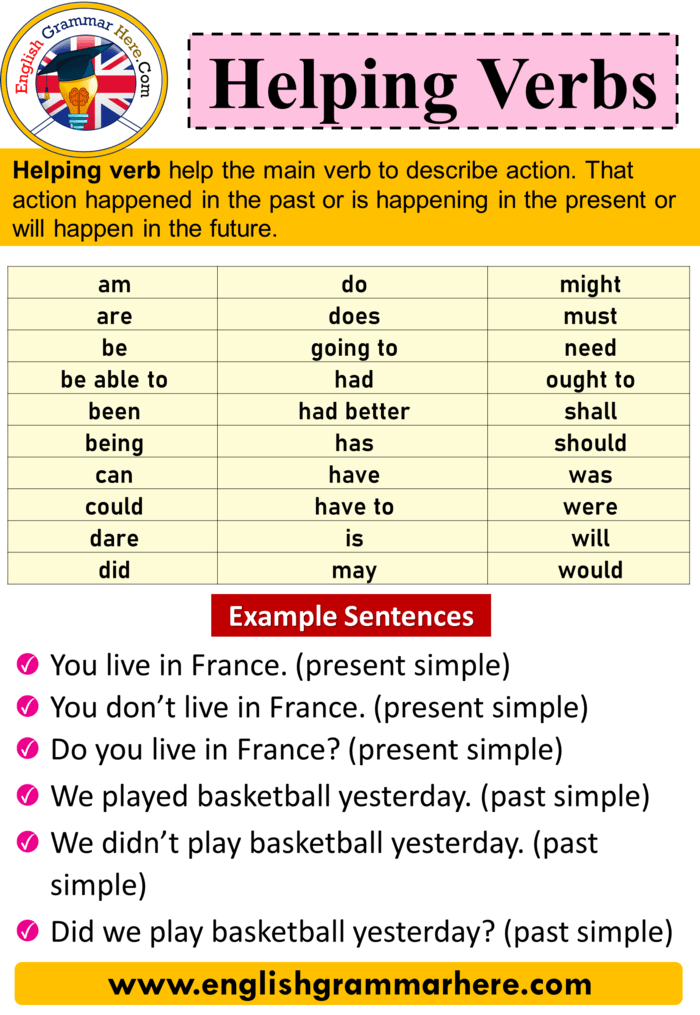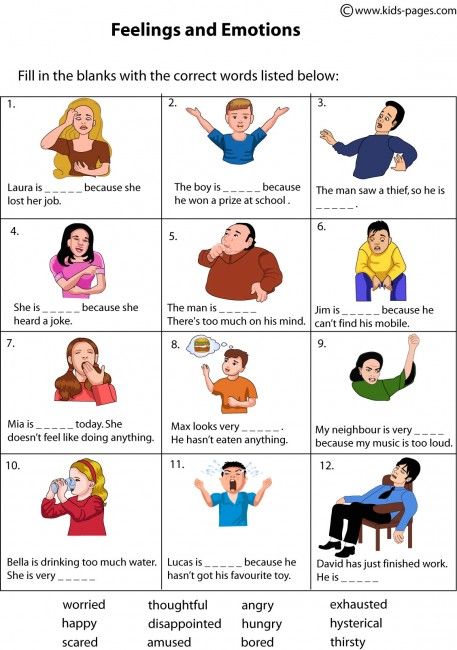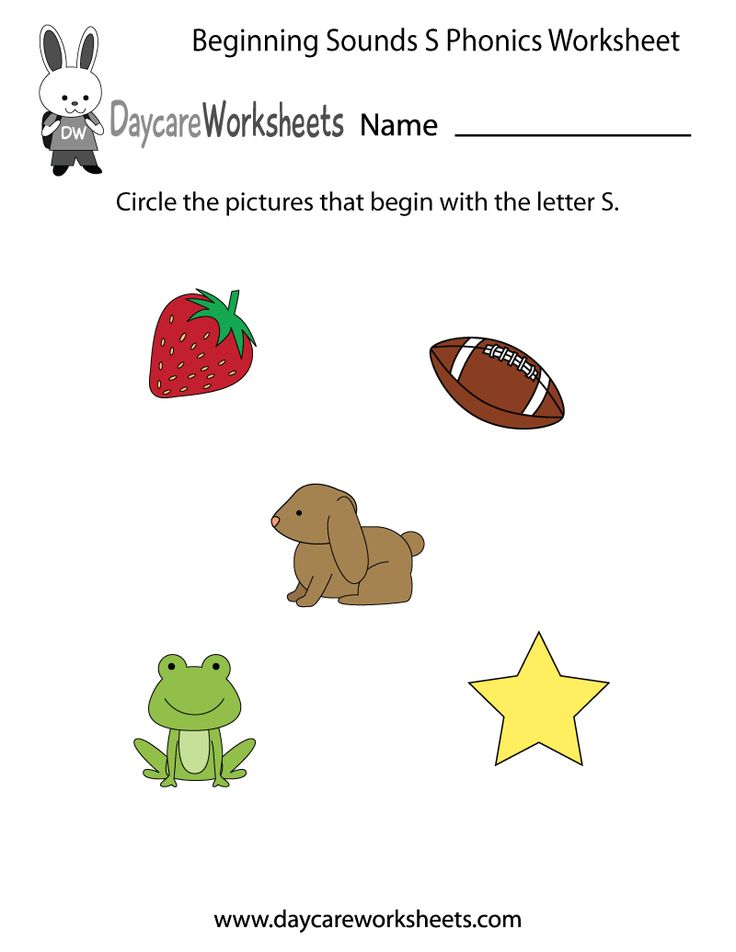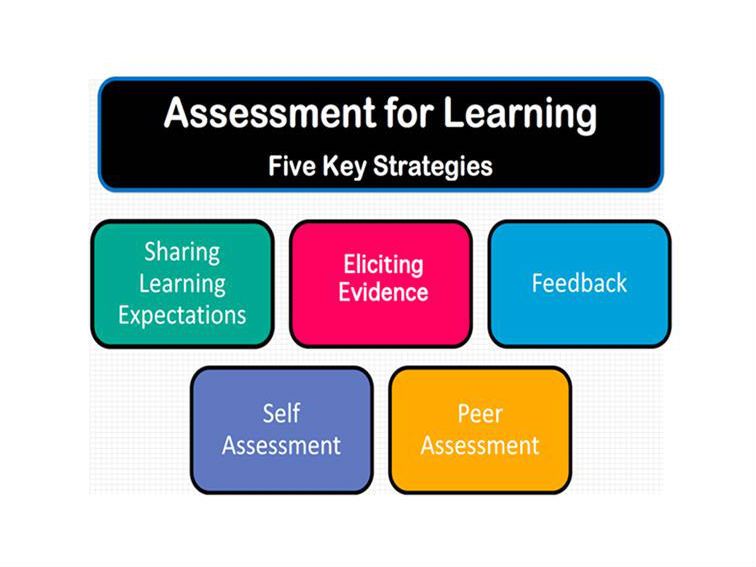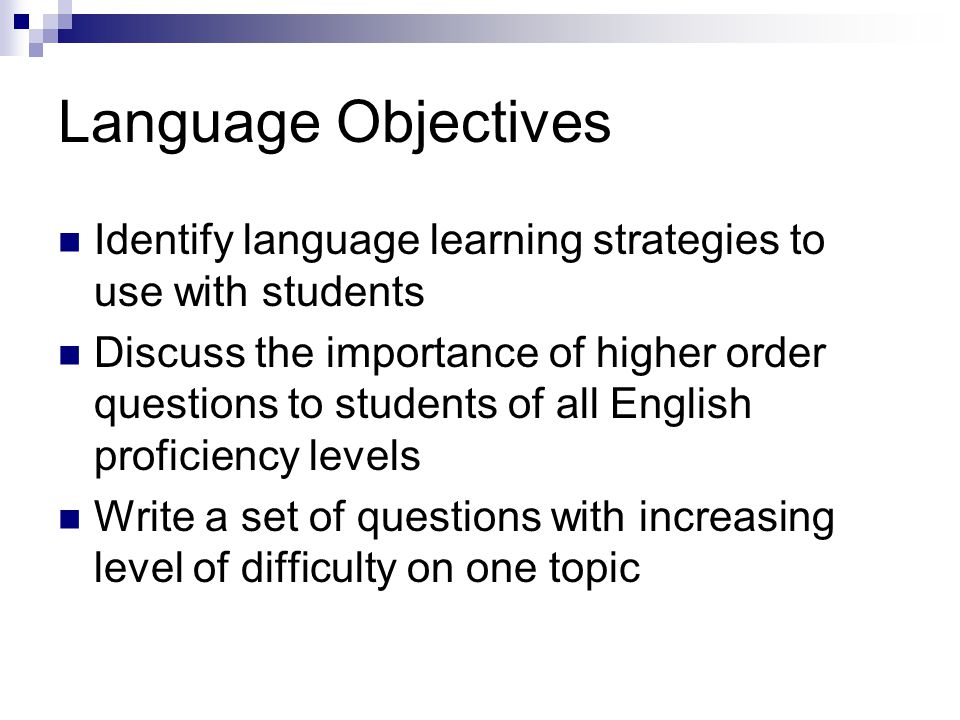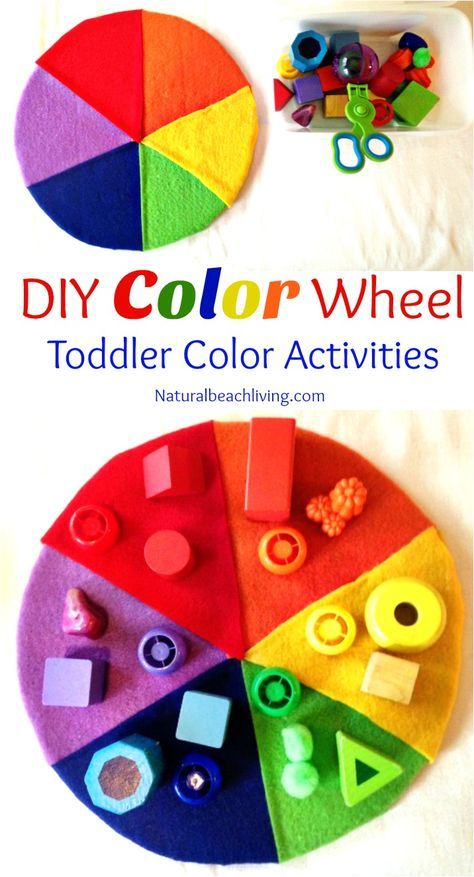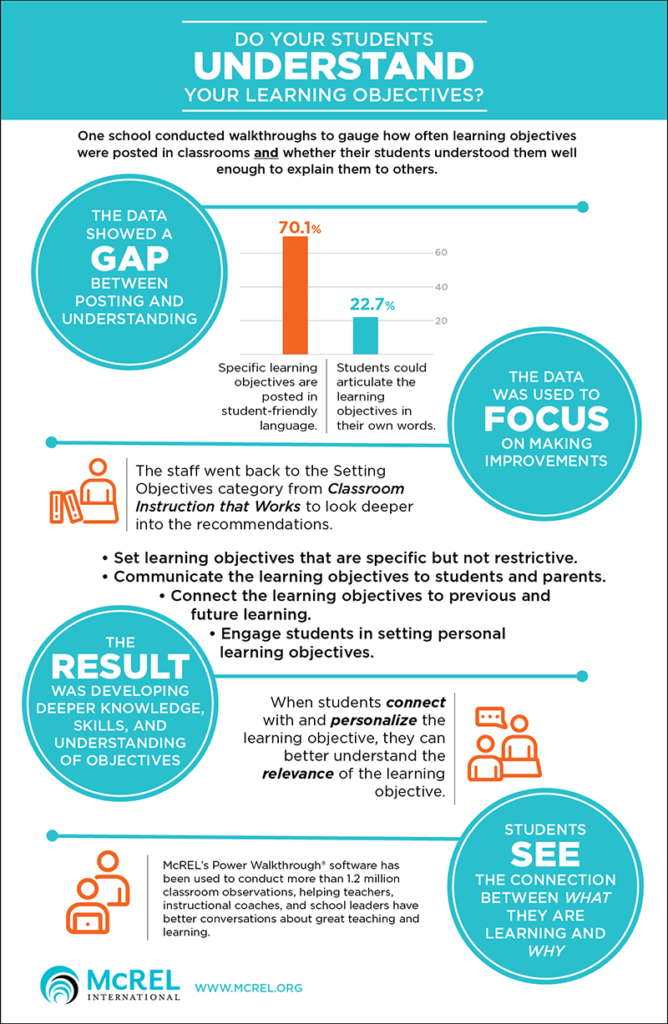Using verbs in sentences
Using verbs | The Writing Centre
A verb indicates the time of an action, event or condition by changing its form. Through the use of a sequence of tenses in a sentence or in a paragraph, it is possible to indicate the complex temporal relationship of actions, events, and conditions
There are many ways of categorising the twelve possible verb tenses. The verb tenses may be categorised according to the time frame: past tenses, present tenses, and future tenses.
Verb Tense: Time
The four past tenses are
- the simple past ("I went")
- the past progressive ("I was going")
- the past perfect ("I had gone")
- the past perfect progressive ("I had been going")
The four present tenses are
- the simple present ("I go")
- the present progressive ("I am going")
- the present perfect ("I have gone")
- the present perfect progressive ("I have been going")
Note that the present perfect and present perfect progressive are a present not past tenses -- that idea is that the speaker is currently in the state of having gone or having been going.
The four future tenses are
- the simple future ("I will go")
- the future progressive ("I will be going")
- the future perfect ("I will have gone")
- the future perfect progressive ("I will have been going")
Verb Tense: Aspect
Verb tenses may also be categorised according to aspect. Aspect refers to the nature of the action described by the verb. There are three aspects: indefinite (or simple), complete (or perfect), continuing (or progressive).
The three indefinite tenses
, or simple tenses, describe an action but do not state whether the action is finished:
- the simple past ("I went")
- the simple present ("I go")
- the simple future ("I will go")
A verb in the indefinite aspect is used when the beginning or ending of an action, an event, or condition is unknown or unimportant to the meaning of the sentence. The indefinite aspect is also used to used to indicate an habitual or repeated action, event, or condition.
The indefinite aspect is also used to used to indicate an habitual or repeated action, event, or condition.
The three complete tenses, or perfect tenses, describe a finished action:
- the past perfect ("I had gone")
- the present perfect ("I have gone")
- the future perfect ("I will have gone")
A verb in the complete aspect indicates that the end of the action, event, or condition is known and the is used to emphasise the fact that the action is complete. The action may, however, be completed in the present, in the past or in the future.
The three incomplete tenses, or progressive tenses, describe an unfinished action:
- the past progressive ("I was going")
- the present progressive ("I am going")
- the future progressive ("I will be going")
A verb in the
continuing aspect indicates that the action, event, or condition is ongoing in the present, the past or the future.
It is also possible to combine the complete tenses and the incomplete tenses, to describe an action which was in progress and then finished:
- the past perfect progressive ("I had been going")
- the present perfect progressive ("I have been going")
- the future perfect progressive ("I will have been going")
The Function of Verb TensesThe Simple Present Tense
The simple present is used to describe an action, an event, or condition that is occurring in the present, at the moment of speaking or writing. The simple present is used when the precise beginning or ending of a present action, event, or condition is unknown or is unimportant to the meaning of the sentence.
Each of the highlighted verbs in the following sentences is in the simple present tense and each sentence describes an action taking place in the present:
- Deborah waits patiently while Bridget books the tickets.
- The shelf holds three books and a vase of flowers.
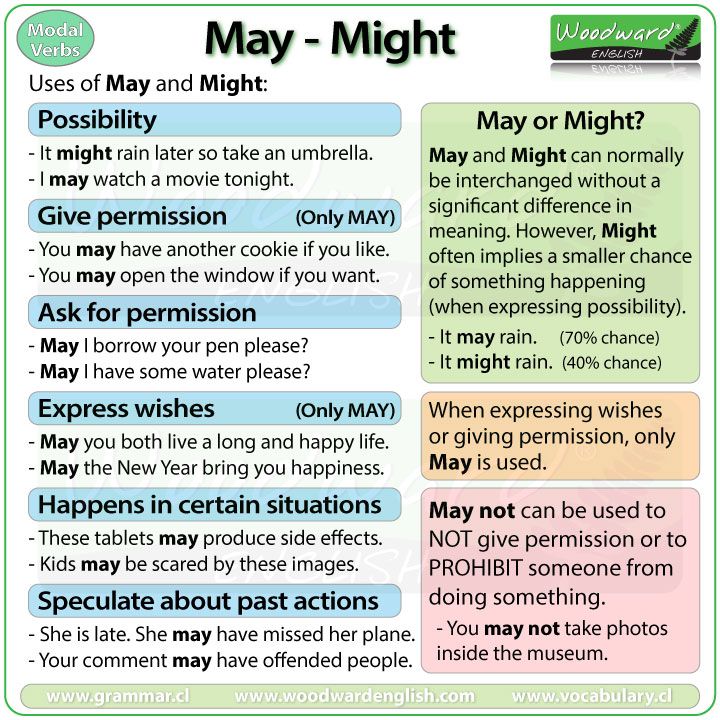
- The crowd moves across the field in an attempt to see the rock star get into her helicopter.
- The Stephens sisters are both very talented; Virginia writes and Vanessa paints.
- Ross annoys Walter by turning pages too quickly.
The simple present is used to express general truths such as scientific fact, as in the following sentences:
- Rectangles have four sides.
- Canada Day takes place on July 1, the anniversary of the signing of the British North America Act.
- The moon circles the earth once every 28 days.
- Calcium is important to the formation of strong bones.
- Menarche and menopause mark the beginning and the ending of a woman's reproductive history.
The simple present is used to indicate a habitual action, event, or condition, as in the following sentences:
- Leonard goes to The Jumping Horse Tavern every Thursday evening.
- My grandmother sends me new mittens each spring.
- In fairy tales, things happen in threes.

- We never finish jigsaw puzzles because the cat always eats some of the pieces.
- Jesse polishes the menorah on Wednesdays.
The simple present is also used when writing about works of art, as in the following sentences.
- Lolly Willowes is the protagonist of the novel Townsend published in 1926.
- One of Artemisia Gentleschi's best known paintings represents Judith's beheading of Holofernes.
- The Lady of Shallot weaves a tapestry while watching the passers-by in her mirror.
- Lear rages against the silence of Cordelia and only belatedly realizes that she, not her more vocal sisters, loves him.
- The play ends with an epilogue spoken by the fool.
The simple present can also be used to refer to a future event when used in conjunction with an adverb or adverbial phrase, as in the following sentences.
- The doors open in 10 minutes.
- The premier arrives on Tuesday.
- Classes end next week.
- The publisher distributes the galley proofs next Wednesday.

- The lunar eclipses begins in exactly 43 minutes.
The Present Progressive
While the simple present and the present progressive are sometimes used interchangeably, the present progressive emphasises the continuing nature of an act, event, or condition.
Each of the highlighted verbs in the following sentences is in the present progressive tense. In each sentence the on-going nature of the action is emphasised by the use of the present progressive rather than the simple present.
- Nora is looking for the first paperback editions of all of Raymond Chandler's books.
- Deirdre is dusting all the shelves on the second floor of the shop.
- The union members are pacing up and down in front of the factory.
- KPLA is broadcasting the hits of the 70s this evening.
- The presses are printing the first edition of tomorrow's paper.
The present progressive is occasionally used to refer to a future event when used in conjunction with an adverb or adverbial phrase, as in the following sentences.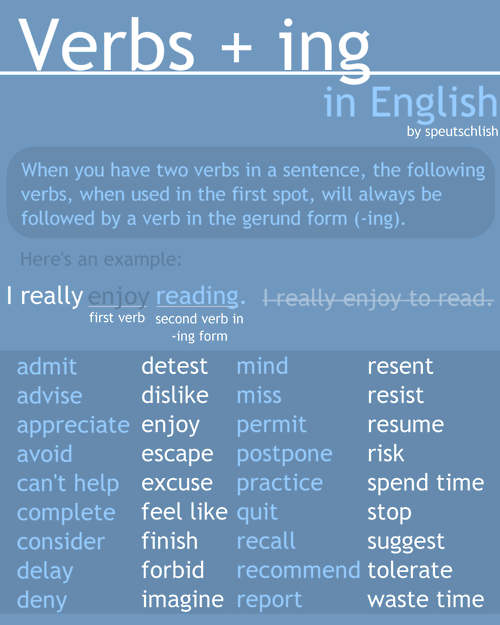
- The doors are opening in 10 minutes.
- The premier is arriving on Tuesday.
- Classes are ending next week.
- The publisher is distributing the galley proofs next Wednesday.
The Present Perfect Tense
The present perfect tense is used to describe action that began in the past and continues into the present or has just been completed at the moment of utterance. The present perfect is often used to suggest that a past action still has an effect upon something happening in the present.
Each of the highlighted compound verbs in the following sentences is in the present perfect tense.
- They have not delivered the documents we need.
This sentence suggest that the documents were not delivered in the past and that they are still undelivered.
- The health department has decided that all high school students should be immunised against meningitis.
The writer of this sentence uses the present perfect in order to suggest that the decision made in the past is still of importance in the present.
- The government has cut university budgets; consequently, the dean has increased the size of most classes.
Here both actions took place sometime in the past and continue to influence the present.
- The heat wave has lasted three weeks.
In this sentence, the writer uses the present perfect to indicate that a condition (the heat wave) began in past and continues to affect the present.
- Donna has dreamt about frogs sitting in trees every night this week.
Here the action of dreaming has begun in the past and continues into the present.
The Present Perfect Progressive Tense
Like the present perfect, the present perfect progressive is used to describe an action, event, or condition that has begun in the past and continues into the present. The present perfect progressive, however, is used to stress the on-going nature of that action, condition, or event.
Each of the highlighted verbs in the following sentences is in the present perfect progressive tense and each sentence suggests that the action began in the past and is continuing into the present.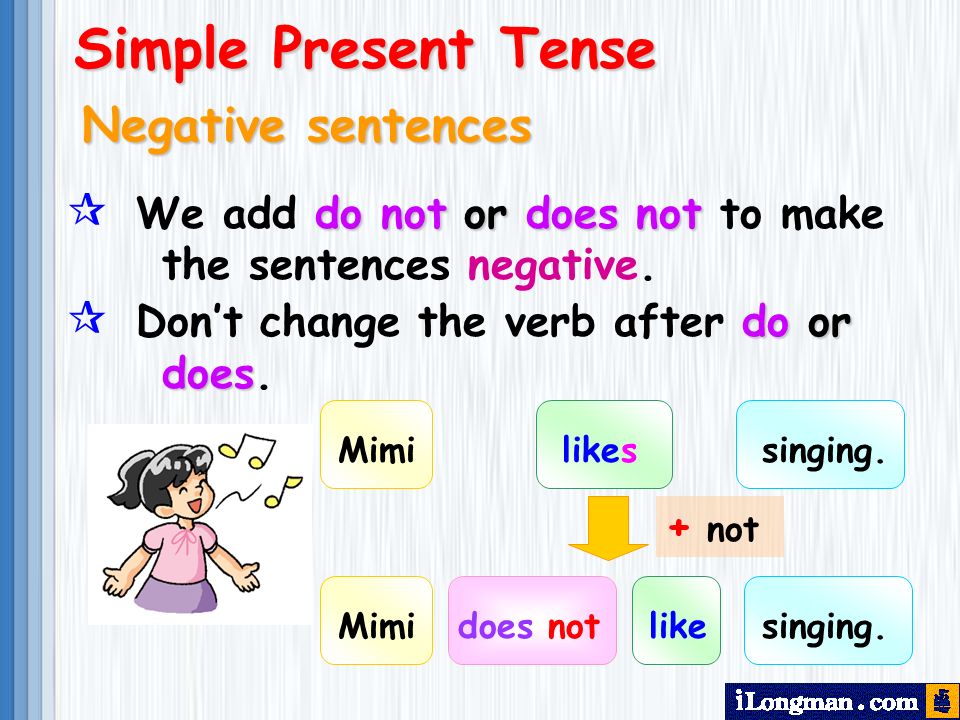
- That dog has been barking for three hours; I wonder if someone will call the owner.
- I have been relying on my Christmas bonus to pay for the gifts I buy for my large family.
- They have been publishing this comic book for ten years.
- We have been seeing geese flying south all afternoon.
- Even though the coroner has been carefully examining the corpse discovered in Sutherland's Gully since early this morning, we still do not know the cause of death.
The Simple Past Tense
The simple past is used to describe an action, an event, or condition that occurred in the past, sometime before the moment of speaking or writing.
Each of the highlighted verbs in the following sentences is in the simple past tense and each sentence describes an action taking place at some point in past.
- A flea jumped from the dog to the cat.
- Phoebe gripped the hammer tightly and nailed the boards together.
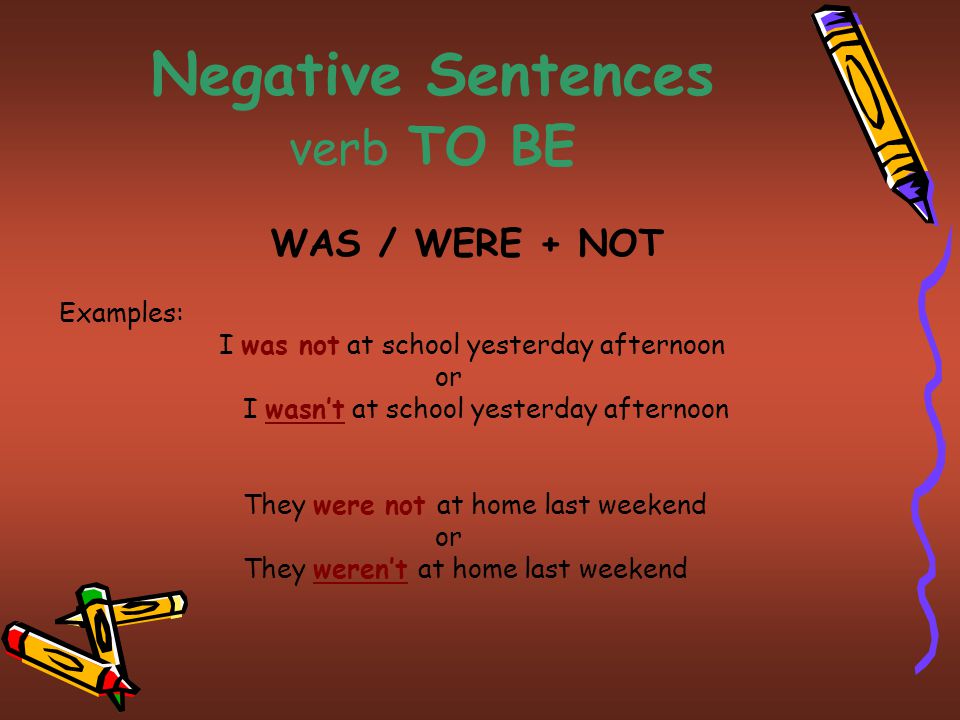
- The gem-stones sparkled in a velvet lined display case.
- Artemisia Gentilsechi probably died in 1652.
- The storyteller began every story by saying "A long time ago when the earth was green."
The Past Progressive Tense
The past progressive tense is used to described actions ongoing in the past. These actions often take place within a specific time frame. While actions referred to in the present progressive have some connection to the present, actions referred in the past progressive have no immediate or obvious connection to the present. The on-going actions took place and were completed at some point well before the time of speaking or writing.
Each of the highlighted verbs in the following sentences is in the past progressive tense.
- The cat was walking along the tree branch.
This sentence describes an action that took place over a period of continuous time in the past.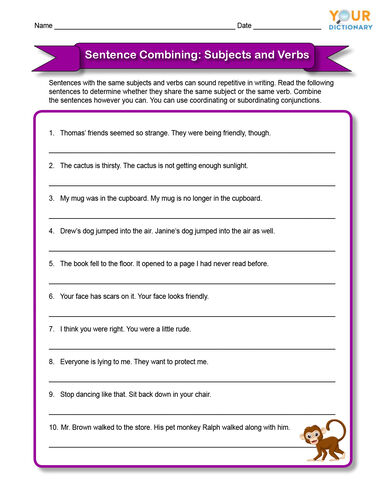 The cat's actions have no immediate relationship to anything occurring now in the present.
The cat's actions have no immediate relationship to anything occurring now in the present.
- Lena was telling a story about the exploits of a red cow when a tree branch broke the parlour window.
Here the action "was telling" took place in the past and continued for some time in the past.
- When the recess bell rang, Jesse was writing a long division problem on the blackboard.
This sentence describes actions ("ran" and "was writing") that took place sometime in the past, and emphasises the continuing nature of one of the actions ("was writing").
- The archivists were eagerly waiting for the delivery of the former prime minister's private papers.
Here the ongoing action of "waiting" occurred at some time unconnected to the present.
- Between 1942 and 1944 the Frank and Van Damm families were hiding in a Amsterdam office building.
In this sentence, the action of hiding took place over an extended period of time and the continuing nature of the hiding is emphasised.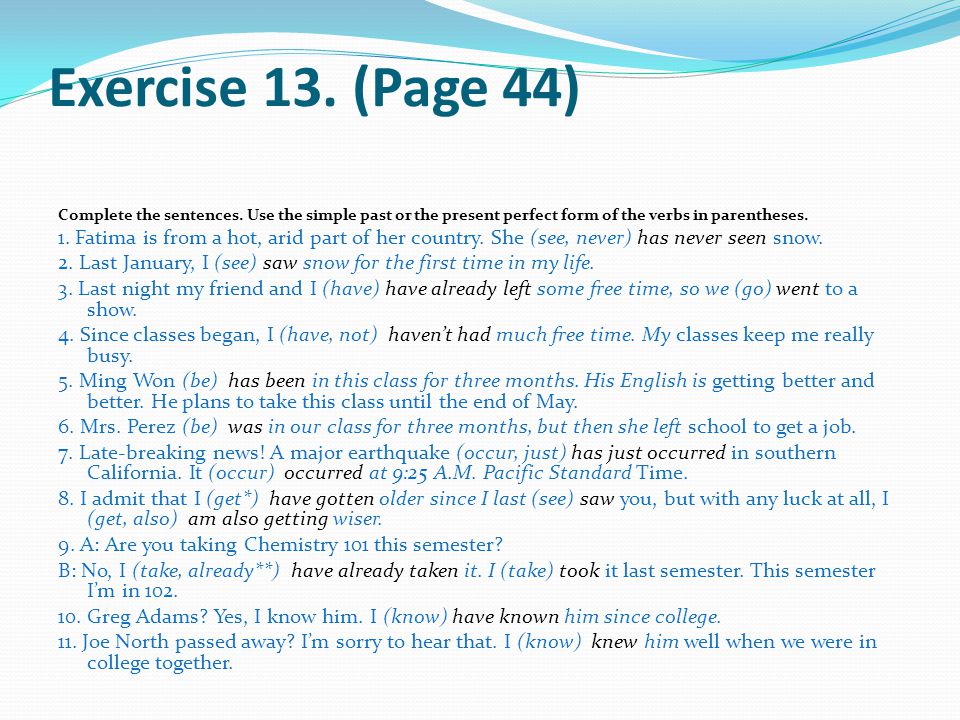
The Past Perfect Tense
The past perfect tense is used to refer to actions that took place and were completed in the past. The past perfect is often used to emphasise that one action, event or condition ended before another past action, event, or condition began.
Each of the highlighted verbs in the following sentences is in the past perfect.
- Miriam arrived at 5:00 p.m. but Mr. Whitaker had closed the store.
All the events in this sentence took place in the past, but the act of closing the store takes place before Miriam arrives at the store.
- After we located the restaurant that Christian had raved about, we ate supper there every Friday.
Here the praise ("had raved") precedes the finding ("located") of the restaurant. Both actions took place sometime before the moment of speaking or writing.
- The elephant had eaten all the hay so we fed it oats for a week.
In this sentence, both actions take place in the past, but the eating of the hay ("had eaten") preceded the eating of the oats ("fed").
- The heat wave had lasted three weeks.
While the sentence "The heat wave has lasted three weeks" suggests that a condition began in the past and continues into the present, this sentence describes an action that began and ended sometime in the past ("had lasted"). By using the past perfect the writer indicates that the heat wave has no connection to any events occurring in the present.
- After she had learned to drive, Alice felt more independent.
Here the learning took place and was completed at a specific time in the past. By using the past perfect rather than the simple past ("learned"), the writer emphasises that the learning preceded the feeling of independence.
The Past Perfect Progressive Tense
The past perfect progressive is used to indicate that a continuing action in the past began before another past action began or interrupted the first action.
Each of the highlighted compound verbs in the following sentences is in the past perfect progressive tense.
- The toddlers had been running around the school yard for ten minutes before the teachers shooed them back inside.
Here the action of the toddlers ("had been running") is ongoing in the past and precedes the actions of the teachers ("shooed") which also takes place in the past.
- We had been talking about repainting the front room for three years and last night we finally bought the paint.
In this example, the ongoing action of "talking" precedes another past action ("bought").
- A construction crew had been digging one pit after another in the middle of my street for three days before they found the water main.
Here, the action of digging ("had been digging") took place in the past and occurred over a period of time. The digging was followed by the action of finding ("found").
- Madeleine had been reading mystery novels for several years before she discovered the works of Agatha Christie.
In this sentence the act of discovery ("discovered") occurred in the past but after the ongoing and repeated action of reading ("had been reading").
- The chef's assistant had been chopping vegetables for several minutes before he realized that he had minced his apron strings.
This sentence is a bit more complex in that it contains three different past verb tenses. The sequence of tenses conveys a complex set of information. The past perfect progressive ("had been chopping") is used to emphasise the ongoing nature of the past act of chopping. While a second past perfect progressive ("had been mincing") could be used, the past perfect ("had minced") is used to suggest that act of mincing was completed. The simple past ("realized") is used to describe the action closest to the present, an action that followed both the chopping and the mincing.
The Simple Future Tense
The simple future is used to refer to actions that will take place after the act of speaking or writing.
Each of the highlighted verbs in the following sentences is in the simple future tense.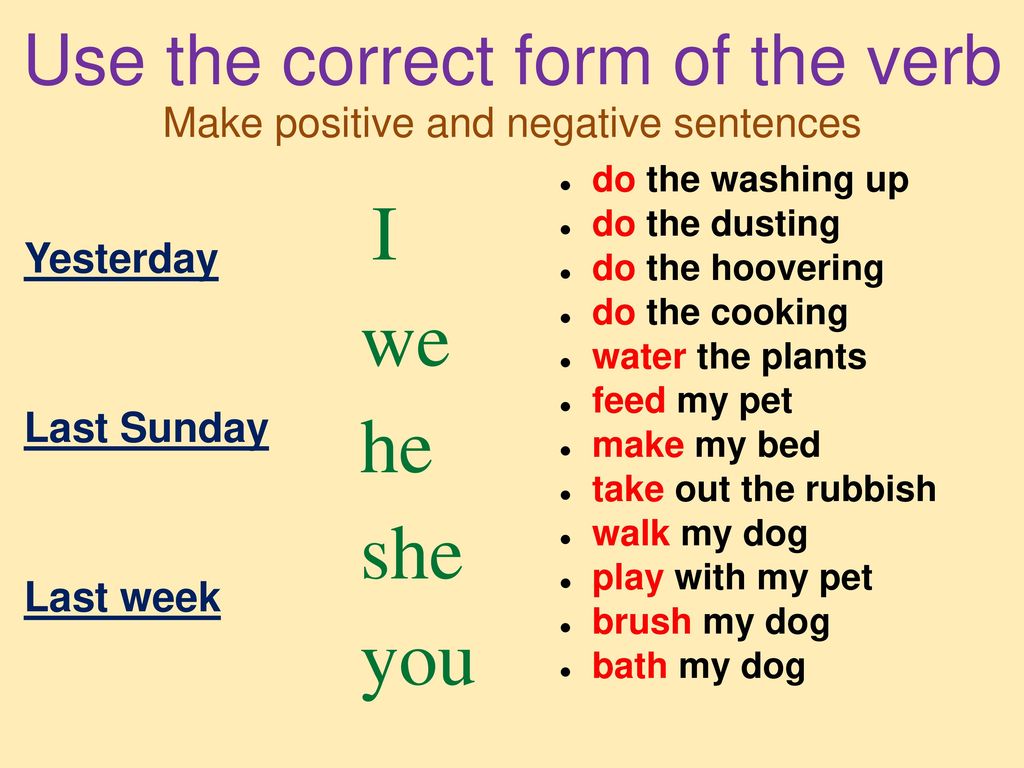
- They will meet us at the newest café in the market.
- Will you walk the dog tonight?
- At the feast, we will eat heartily.
- Bobbie will call you tomorrow with details about the agenda.
- The Smiths say that they will not move their chicken coop.
The Future Progressive Tense
The future progressive tense is used to describe actions ongoing in the future. The future progressive is used to refer to continuing action that will occur in the future.
Each of the highlighted compound verbs in the following sentences is in the future progressive tense.
- The glee club will be performing at the celebration of the town's centenary.
- Ian will be working on the computer system for the next two weeks.
- The selection committee will be meeting every Wednesday morning.
- We will be writing an exam every afternoon next week.
- They will be ringing the bells for Hypatia next month.

The Future Perfect Tense
The future perfect is used to refer to an action that will be completed sometime in the future before another action takes place.
Each of the highlighted verbs in the following sentences is in the future perfect tense.
- The surgeon will have operated on 6 patients before she attends a luncheon meeting.
In this sentence, the act of operating ("will have operated") takes place in the future sometime before the act of attending ("attends").
- The plumber and his assistant will have soldered all the new joins in pipes before they leave for the next job.
Here, the plumbers' act of soldering ("will have soldered") will precede the act of leaving ("leave").
- By the time you get back from the corner store, we will have finished writing the thank you letters.
In this sentence, the act of returning from the store ("get back") takes place after the act of writing ("will have written").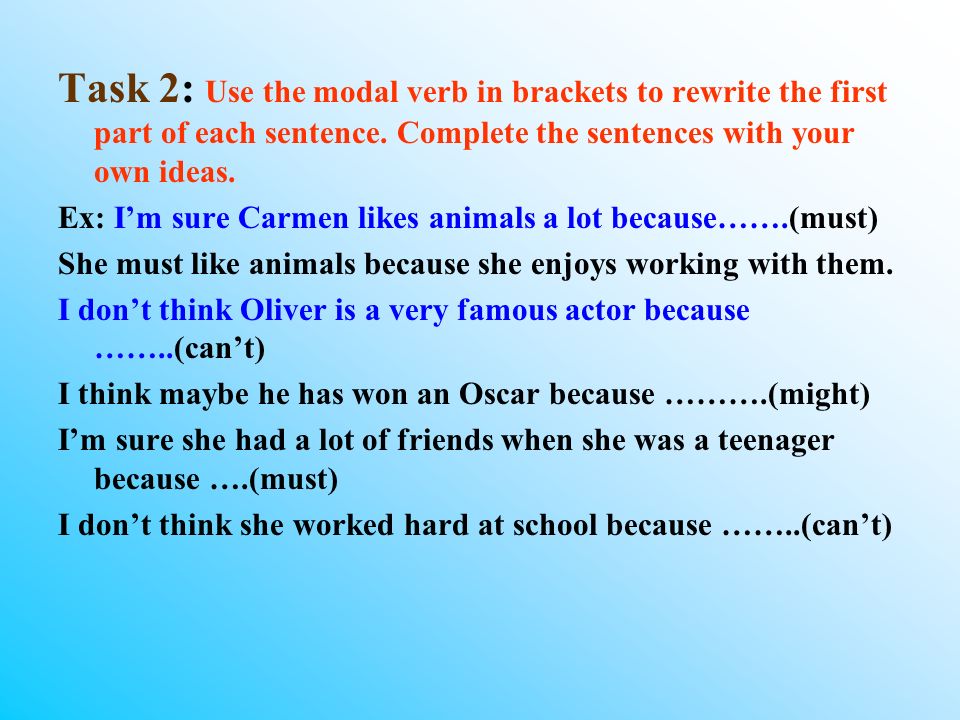
- If this year is like last year, I will have finished my holiday shopping long before my brother starts his.
In this example, the act of finishing ("will have finished") occurs well before the act of starting ("starts").
- They will have written their first exam by the time we get out of bed.
Here, the act of getting out of bed occurs sometime after the writing of the exam.
The Future Perfect Progressive Tense
The future perfect progressive tense is used to indicate a continuing action that will be completed at some specified time in the future. This tense is rarely used.
Each of the highlighted verbs in the following sentences is in the future perfect progressive tense.
- I will have been studying Greek for three years by the end of this term.
In this sentence, the future perfect progressive is used to indicate the ongoing nature of the future act of the studying.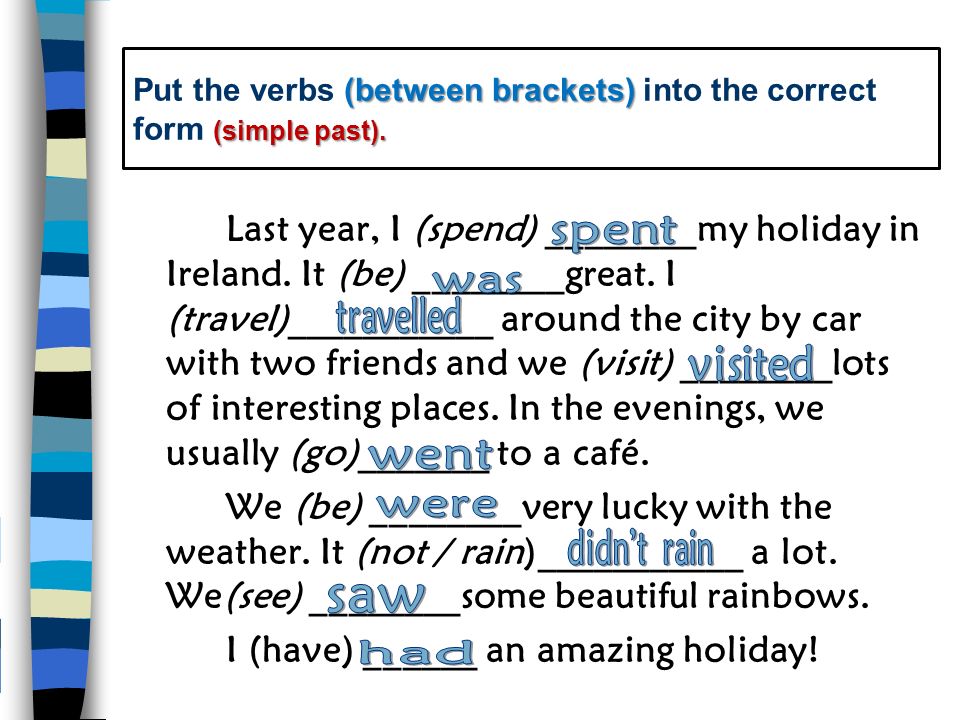 The act of studying ("will have been studying") will occur before the upcoming end of term.
The act of studying ("will have been studying") will occur before the upcoming end of term.
- By the time the meeting is over, the committee will have been arguing about which candidate to interview for three hours.
Similarly in this sentence, the ongoing nature of a future act ("will have been arguing") is emphasised by the use of the future perfect progressive. The act of sustained arguing will take place before the meeting is over.
- When he returns, the wine will have been fermenting for three months.
Here the ongoing action of fermentation will precede ("will have been fermenting") the act of returning.
Written by Heather MacFadyen
Action Verb Examples
Action verbs, also called dynamic verbs, express an action whether it be physical or mental. An action verb explains what the subject of the sentence is doing or has done. Looking at action verb examples helps make it clear the function of action verbs in sentences and what purpose they serve.
Ballerina Illustration With Action Verb Examples
Advertisement
Common Action Verbs
There are endless action verbs used in the English language. An action verb can express something that a person, animal or even object can do. To determine if a word is an action verb, look at the sentence and ask yourself if the word shows something someone can do or something someone can be or feel. If it is something they can do, then it is an action verb (if it is something they can be or feel, it is a non-action, or stative, verb).
Below is a list of commonly used action verbs:
| Act | Give | Read |
Examples of Action Verbs in Sentences
The following are examples of how action verbs are used in sentences, keep in mind that you can use more than one action verb in a sentence.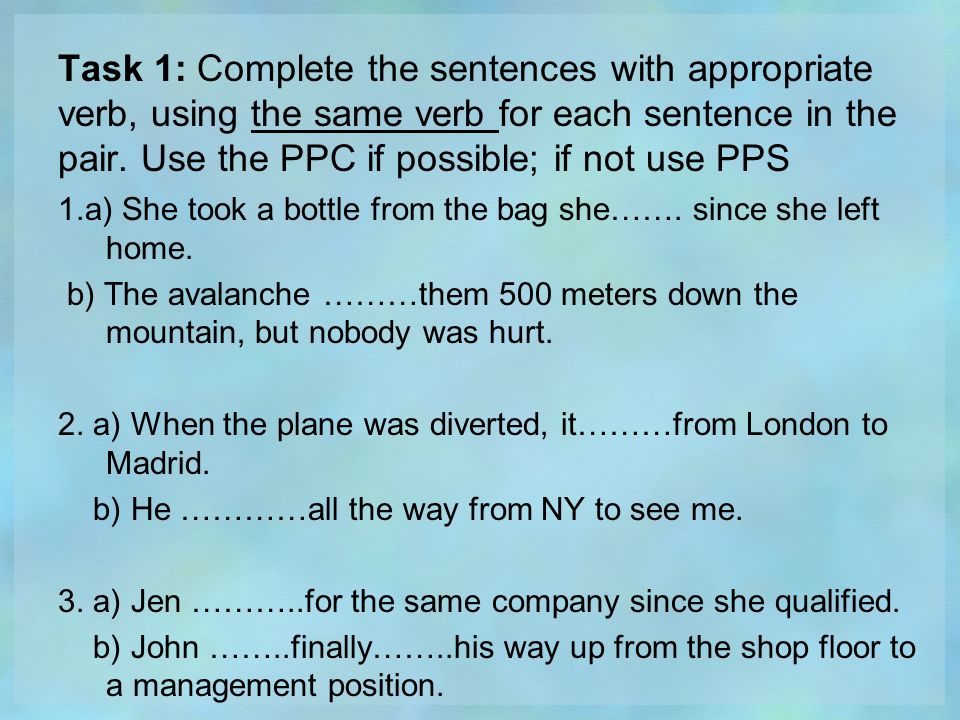 The action verb is in bold in each sentence. Remember that action verbs don't have to describe movement; the action can be mental.
The action verb is in bold in each sentence. Remember that action verbs don't have to describe movement; the action can be mental.
- Anthony is throwing the football.
- She accepted the job offer.
- He thought about his stupid mistake in the test.
- John visited his friend for a while and then went home.
- The dog ran across the yard.
- She left in a hurry.
- She yelled when she hit her toe.
- The cat sat by the window.
- I'll play this song on my guitar.
- He hit a home run at the last game.
- In the summer, we will swim in our pool.
- Will you help me with the laundry?
- He rode his new bike around the block for hours.
- The horse trotted along the trail.
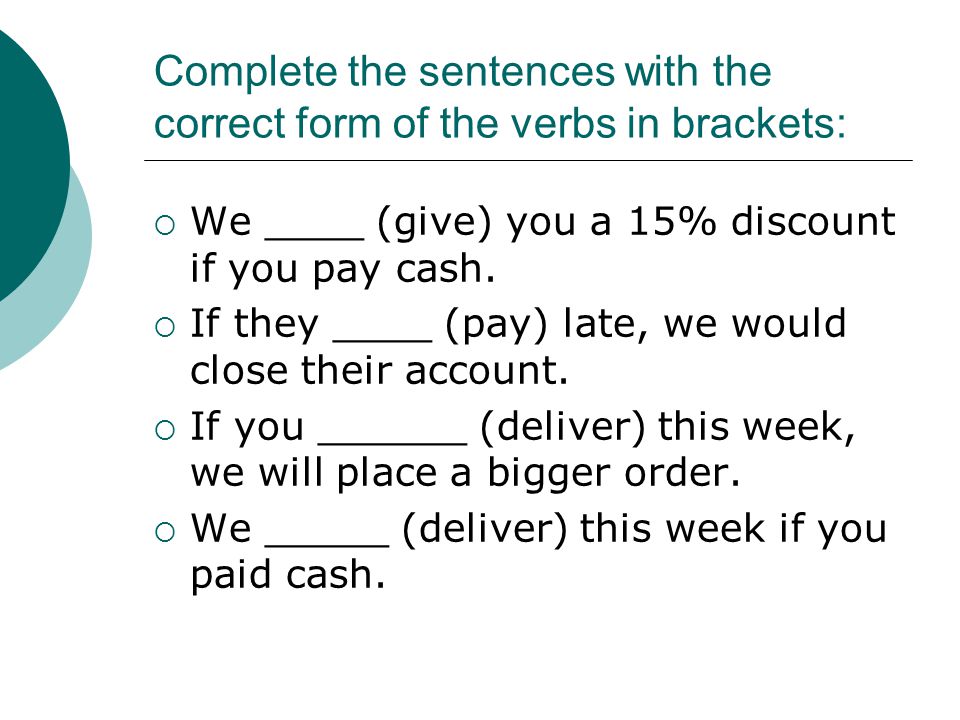
- We ate dinner then walked around the park.
- Did you fix the mistake in your homework?
- She waited for her friend at the mall.
- She lay on the couch and slept there all night.
- Close the door!
- The bird sings a cheery song every morning.
- The teacher reads a book to her students then asks them questions about the story.
- The roof on the house leaks.
- The lightning struck the tree.
- They bought a new house.
Action Verb Tenses
What separates action verbs from non-action verbs (stative verbs) is that they can be used in continuous tenses, meaning they have a present, past and future tense. The following are examples:
Action verb: eat
- Present tense: I eat when I am hungry.

- Past tense: She ate dinner last night at six.
- Future tense: We will eat lunch tomorrow at noon.
Action verb: swim
- Present tense: We swim when it is hot outside.
- Past tense: Last week, we swam in the pool.
- Future tense: We will be swimming at the lake next month.
Action verb: sleep
- Present tense: The baby sleeps in the nursery.
- Past tense: She slept all night.
- Future tense: We will be sleeping in tents at summer camp.
Action verb: play
- Present tense: The kids play basketball at recess.
- Past tense: We played the last game on Monday.
- Future tense: The girls will be playing at the park this weekend.
Advertisement
The Importance of Action Verbs
Action verbs are used to deliver important information in a sentence and add impact and purpose.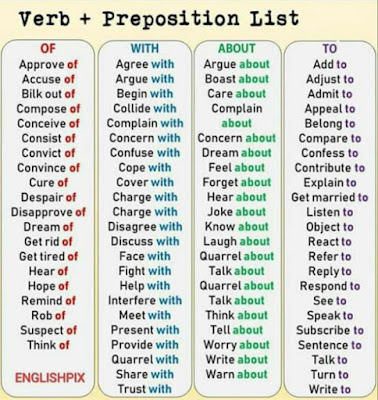 These verbs play a vital role in grammar and signals to the reader what action the subject is performing in the sentence.
These verbs play a vital role in grammar and signals to the reader what action the subject is performing in the sentence.
We also have more information on the function and types of action verbs. And once you're fully familiar with action verbs you can practice further with YourDictionary's action verb worksheets.
- elementary school
- middle school
- high school
Related Articles
What Is a Verb? Explanation, Usage, and Examples
Jumping, eating, sneezing, and sleeping are all verbs you likely perform in a single day, though hopefully not at the same time (that could get messy). While most verbs show the action in a sentence, some verbs are a little harder to spot. However, every sentence needs one — or it’s not a sentence at all.
Present Continuous Tense Examples
The present continuous tense is used for actions happening now or for an action that is unfinished.
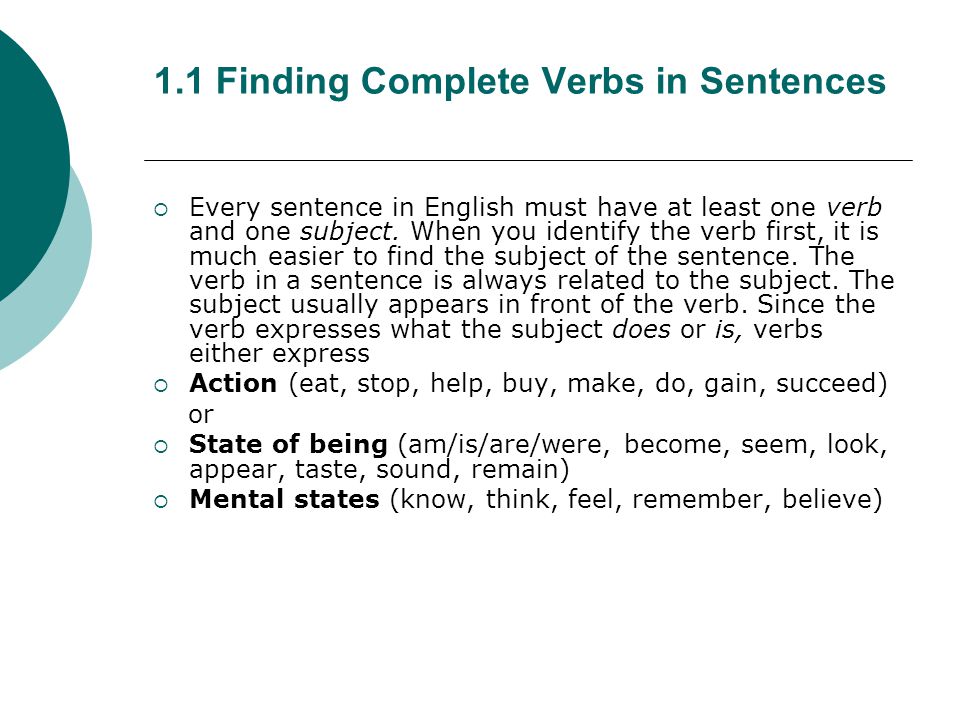 This tense is also used when the action is temporary.
This tense is also used when the action is temporary.
Adverb / Grammar - russky.info
- Grammar
- Adverb
Adverb
An adverb is a part of speech that denotes a sign of an action, a sign of an object and another sign.
- In the evening of we will go to the theatre. (= In the evening we will go to the theater.)
An adverb can refer to a verb and shows how (= how?) , where (= where?) , when (= when?) , why (= why?) , where (= where?) , for what purpose (= for what purpose?) , for what reason (= for what reason?) , to what extent (= to what extent?) action occurs:
- He lives ( how? ) fun . (= He lives (how?) cheerfully.)
- ( Where? ) Everywhere there were many flowers. (= (Where?) There were many flowers everywhere.)
- He did it to me ( for what purpose? ) out of spite. (= He did it to me (for what purpose?) out of spite.)
- We ( when? ) today returned from vacation. (= We (when?) came back from vacation today.)
An adverb can also refer to special forms of the verb - participle and gerund, as well as to a noun, adjective and other adverbs and indicate their features:
- Learn ( how? ) good , live ( how? ) friendly . (= Study (how?) well, live (how?) together.)
- This student ( to what extent? ) is very diligent.
 (= This student is (to what extent?) very diligent.)
(= This student is (to what extent?) very diligent.) - She works ( how? ) very willingly . (= She works (how?) quite willingly.)
- Here is the movement ( where? ) forward . (= Here there is a movement (where?) forward.)
- He ( when? ) always is friendly.
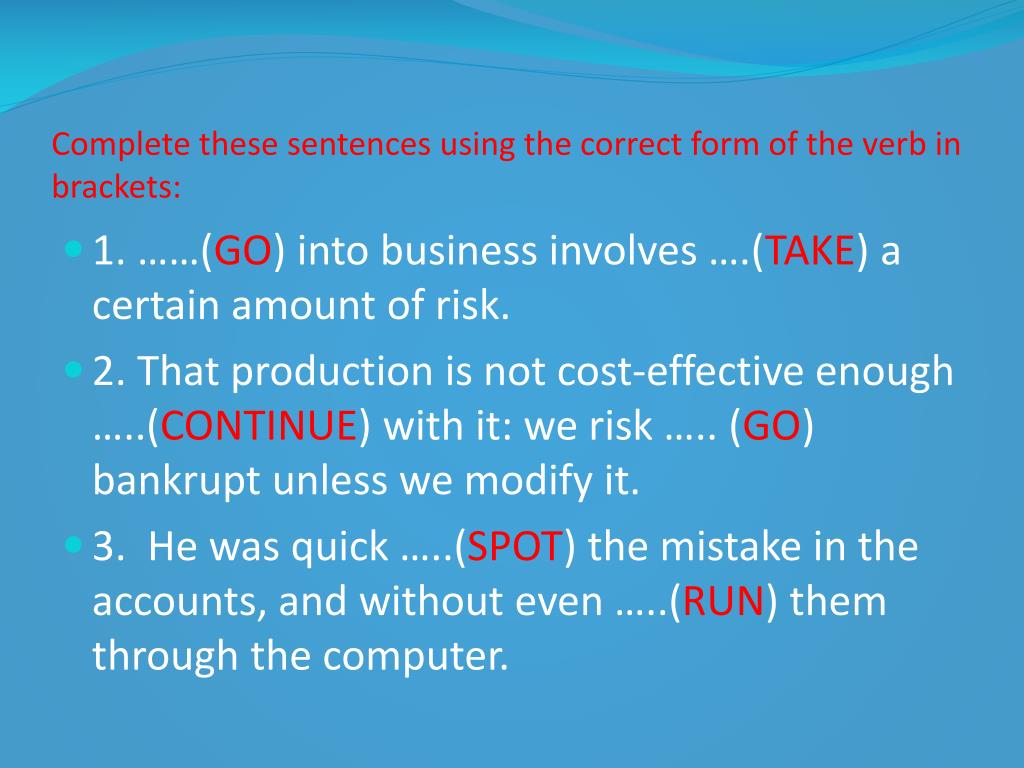 (= He (when?) is always friendly.)
(= He (when?) is always friendly.)
The adverb does not change, i.e. it does not decline or conjugate, and is usually a circumstance in a sentence.
Adverbs that refer to the verb and its forms can indicate the manner of action, cause, purpose, measure and degree.
Adverbs that refer to an adjective or other adverb can indicate the measure and degree of a feature.
Classes of adverbs
According to their meaning, adverbs are divided into the following main categories:
| Meaning of adverbs | Questions answered | Examples of adverbs |
|---|---|---|
| 1. Adverbs of action | How? (= How?) , How? (= In what way?) | fast (= fast) , Good (= good) , slowly (= slowly) , in a new way (= in a new way) , like a friend (= friendly) , in Russian (= in Russian) , carefully (= carefully) , suddenly (= all of a sudden) , cleanly (= white) , So (= so) , barely (= barely) , no way (= no way) |
2.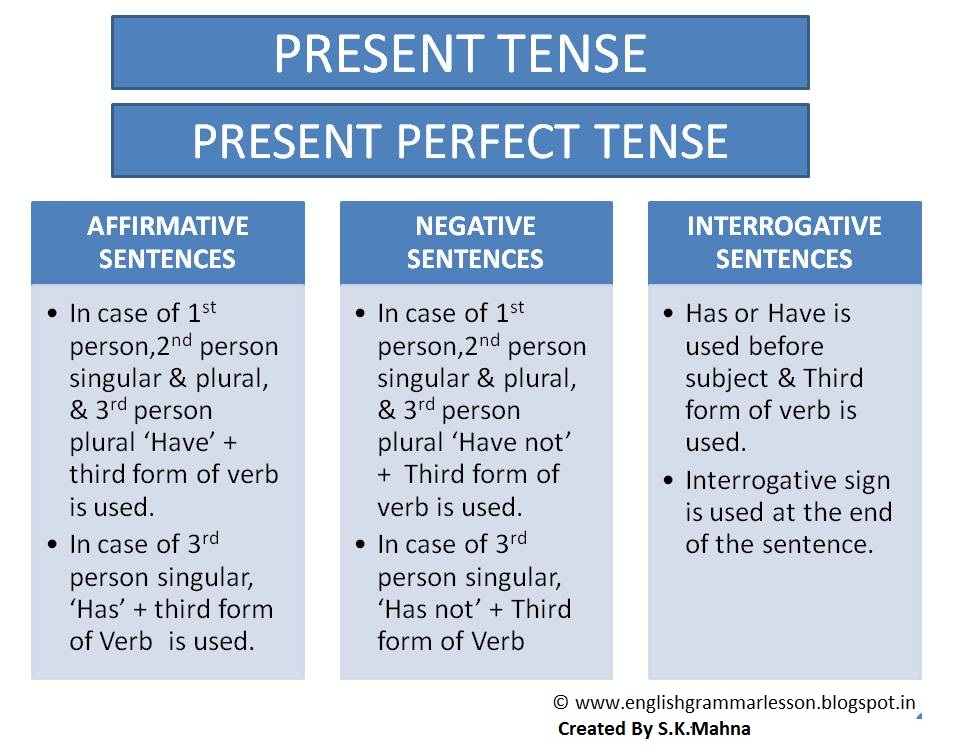 Adverbs of time Adverbs of time | When? (= When?) , Since when? (= Since when?) , How long? (= Until when?) , How long? (= How long?) | today (= today) , tomorrow (= tomorrow) , yesterday (= yesterday) , in the morning (= in the morning) , afternoon (= during the day) , in the evening (= in the evening) , at night (= at night) , now (= now) , early (= early) , then (= then) , now (= now) , the day before (= the day before) |
3.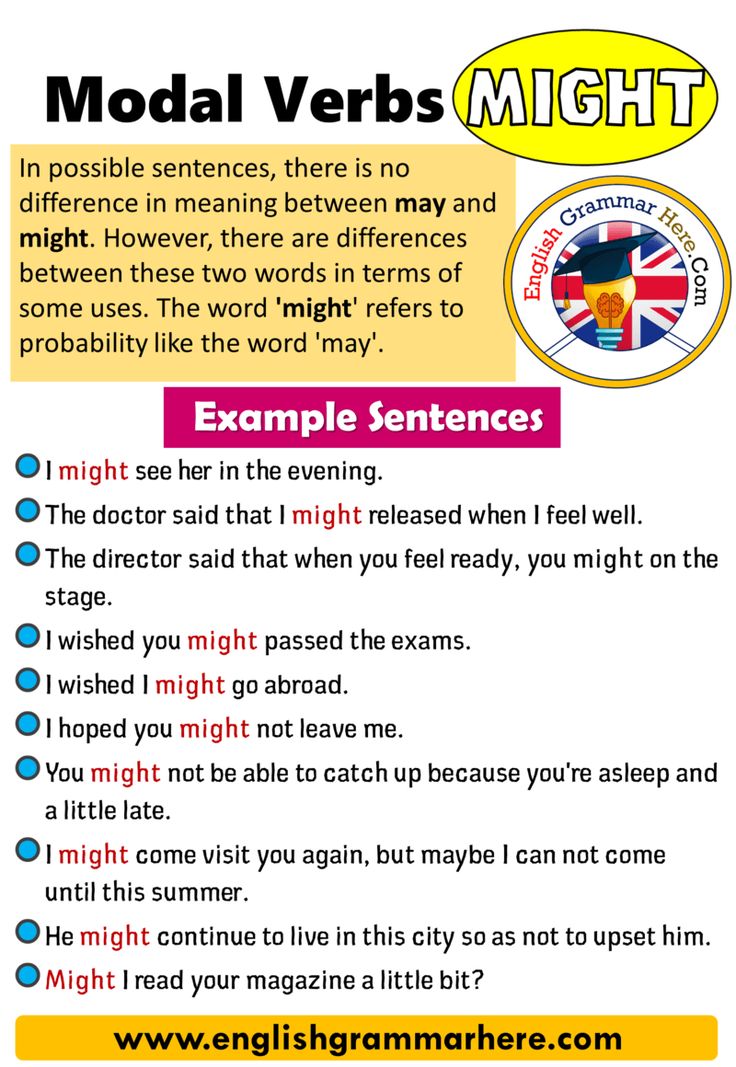 Adverbs of place Adverbs of place | Where? (= Where?) , Where? (= Where to?) , Where? (= Where?) | here (= here) , there (= there) , near (= near) , away (= away) , here (= here) , there (= there) , from there (= from there) , everywhere (= everywhere) , right (= right) , left (= left) , from afar (= from afar) , way down (= down) , up (= up) , nowhere (= nowhere) , nowhere (= nowhere) |
4. Adverbs of cause Adverbs of cause | Why? (= Why?) , From what? (= Why?) , For what reason? (= For what reason?) | hence (= hence) , because (= because) , rashly (= hastily) , reluctantly (= reluctantly) , blindly (= blind) , awake (= awake) |
| 5. Adverbs of purpose | What for? (= Why?) , For what purpose? (= For what purpose?) , For what? (= For what?) | out of spite (= out of spite) , on purpose (= on purpose) , no need (= no need) , specially (= on purpose) , in defiance (= contrary) , as a joke (= jokingly) , intentionally (= intentionally) , unintentionally (= unintentionally) , accidentally (= accidentally) |
6. Adverbs of measure and degree Adverbs of measure and degree | How? (= How much?) , In what time (= What time?) , How much? (= How much?) , To what degree? (= To what extent?) , To what extent? (= To what extent?) | very (= very) , a lot of (= a lot) , very (= quite) , at all (= completely) , in half (= in half) , twice (= twice) , thrice (= three times) , together (= together) , threesome (= three of us) , too much (= too) , quite (= quite) , enough (= pretty) , absolutely (= perfect) |
Comparisons of adverbs
Adverbs formed from qualitative adjectives have comparative and superlative degrees of comparison.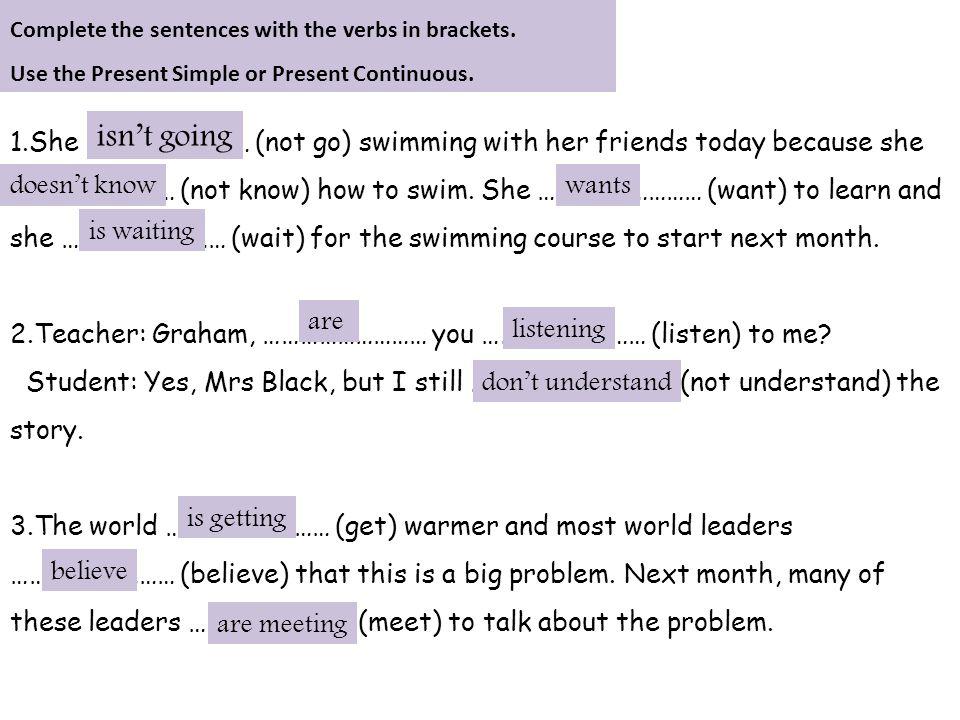
Education of the comparative degree
Simple form
| Initial form of the adverb | Educational aid | Example |
|---|---|---|
| Adjectives like | Suffix | |
| island about (= sharp) | -ee- | sharp ee (= sharper) |
| fast about (= fast) | -ey- | quick ee (= faster) |
| interesting about (= interesting) | -ey- | interesting her (= more interesting) |
| dry about (= dry) | -she- | soo she (= dry) |
| dalek o (= far) | -she- | far she (= further) |
| close to (= close) | - same - | bli same (= closer) |
Some adverbs, like adjectives, have a suppletive (that is, formed from another stem) comparative form:
- Good (= good) - is better than (= better)
- poorly (= bad) - worse than (= worse)
Superlatives
Superlatives of adverbs usually have a compound form, which is a combination of two words: the comparative degree of an adverb and a pronoun all (= all) or Total (= total) :
Compound
Simple Comparative + Pronoun all (= all) (for soul items) or Total (= total) (for inanimate objects)
| sharp ee (= sharper) | sharp ee all (= sharper than everything) |
| quick ee (= faster) | fast she is only (= fastest) |
| interesting her (= more interesting) | interesting she is only (= most interesting) |
| su she (= dry) | su most (= dryest of all) |
| far she (= further) | far all (= farthest away) |
Predicative adverbs (Words of the category of state)
A special group consists of predicative adverbs that denote a state and perform the function of a predicate (predicate) in an impersonal sentence. It could be:
It could be:
- state of living beings fun (= fun) , sad (= sad) , funny (= funny) , it's a shame (= embarrassing) , ashamed (= ashamed) ):
- I'm bored without you - I yawn; with you, I feel sad , - I endure ... (Pushkin) (= I'm bored without you - I yawn; with you I'm sad - I endure ... (Pushkin))
- the state of the environment, conditions ( cold (= cold) , windy (= windy) , hot (= hot) , purely (= pure) , cosy (= cozy) , spacious (= spacious) ):
- It’s still cold outside , but the sun is already shining like spring. (Bitter) (= It is still cold outside, but the sun is already shining like spring. (Bitter)
Some adverbs (they are called self-predicative) can only act as a predicate. These are adverbs can (= possible) , need (= need) , necessary (= necessary) , it is forbidden (= not possible) , it's a pity (= sorry) , it's time (= time) , once (= no time) , fearfully (= fearful) , ashamed (= ashamed) , ashamed (= ashamed) etc.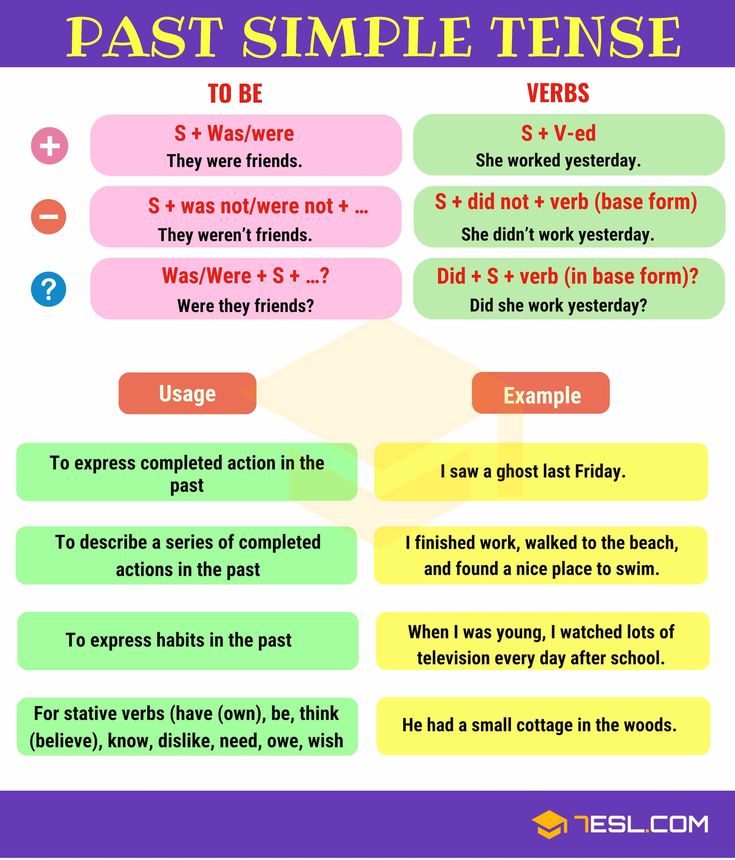 :
:
- It is impossible to believe in this . (= It's impossible to believe.)
Impossible to believe - compound verb predicate. Impossible - predicative adverb.
Nominal and pronominal adverbs
Adverbs are divided into significant and pronominal. Significant adverbs name a sign, and pronominal adverbs only point to it.
Pronominal adverbs, in turn, are divided into several groups. These groups are similar to the ranks of pronouns.
| Adverb | What | indicateExamples |
|---|---|---|
| Index | Point to a specific place, time, reason, etc.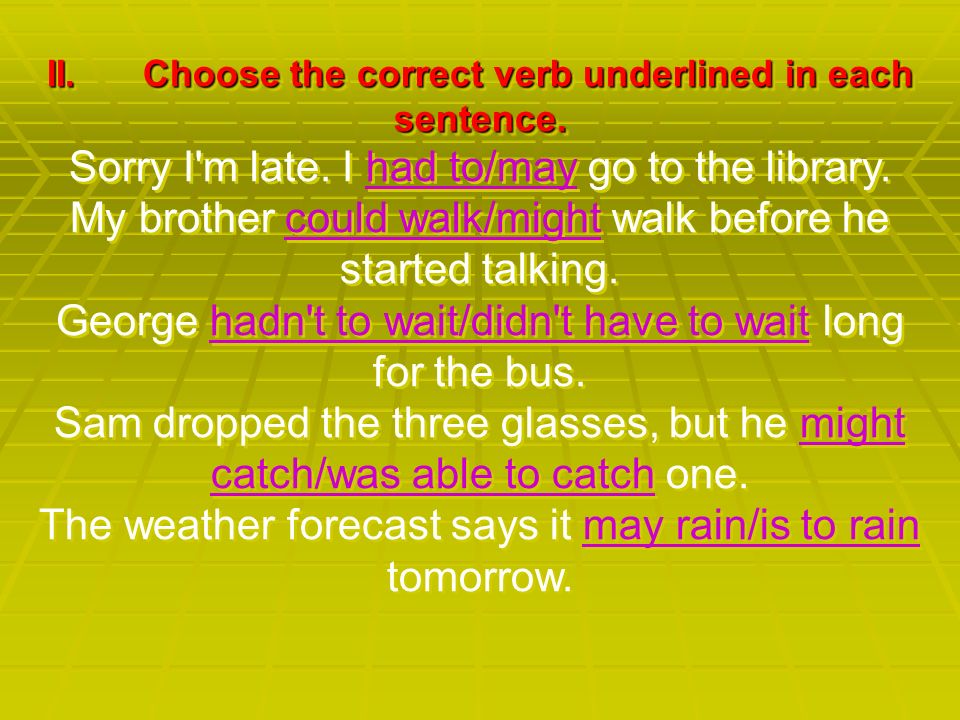 Demonstrative pronouns are often used to connect sentences in a text. | here (= here) , here (= here) , there (= there) , there (= there) , from there (= from there) , then (= then) , then (= then) , that's why (= therefore) , So (= so) |
| Interrogative | Used in interrogative sentences. | where? (= where?) , when? (= when?) , where? (= where?) , where? (= where?) , why? (= why?) , why? (= why?) , as? (= how?) |
| Relative | In form they coincide with interrogative pronominal adverbs, act as allied words and serve to connect parts in a complex sentence. | where (= where) , when (= when) , where (= where) , where (= from where) , why (= why) , why (= why) , how (= how) |
| Undefined | Indicate an unknown or inaccurately known place, time, reason, etc.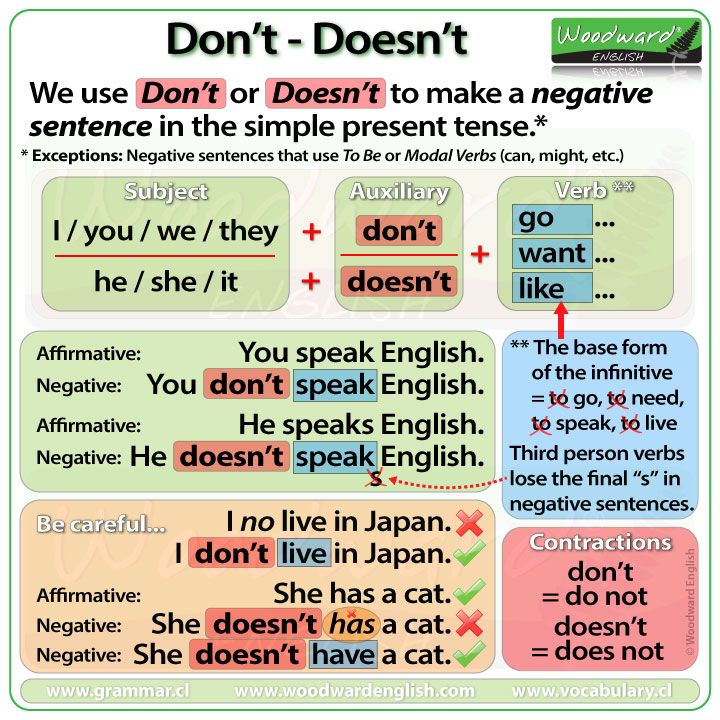 They are formed from interrogative pronominal adverbs using the suffixes -something, -or, -something and the prefixes some- and less often not-. They are formed from interrogative pronominal adverbs using the suffixes -something, -or, -something and the prefixes some- and less often not-. | somewhere (= somewhere) , sometime (= once upon a time) , somehow (= somehow) , somewhere (= somewhere) , somewhere (= somewhere) , somewhere (= somewhere) , somehow (= somehow) , once (= no time) |
| Negative | Formed from interrogative pronominal adverbs with the help of prefixes ni- and ne-.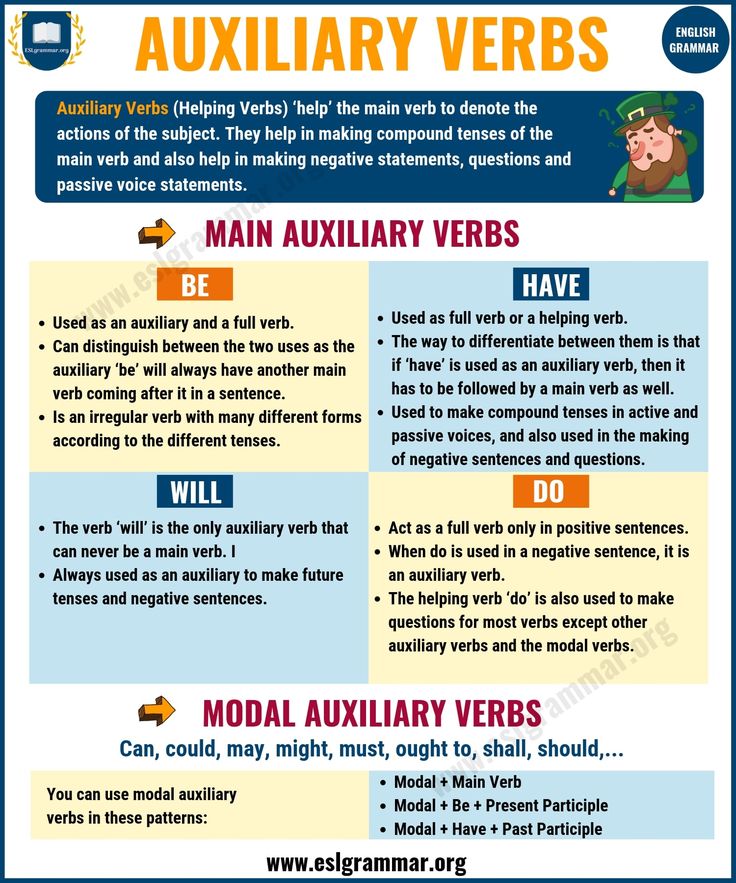 He- is always stressed, and the syllable nor- is always unstressed. | never (= never) , nowhere (= nowhere) , nowhere (= nowhere) , nowhere (= nowhere) , no need (= no need) |
Although auxiliary verbs ( auxiliary verbs ) do not have their own meaning in English, they play a very important role. In combination with semantic (main) verbs, auxiliary verbs form almost all verb tenses in English.
There are three auxiliary verbs in English: to be, to do and to have.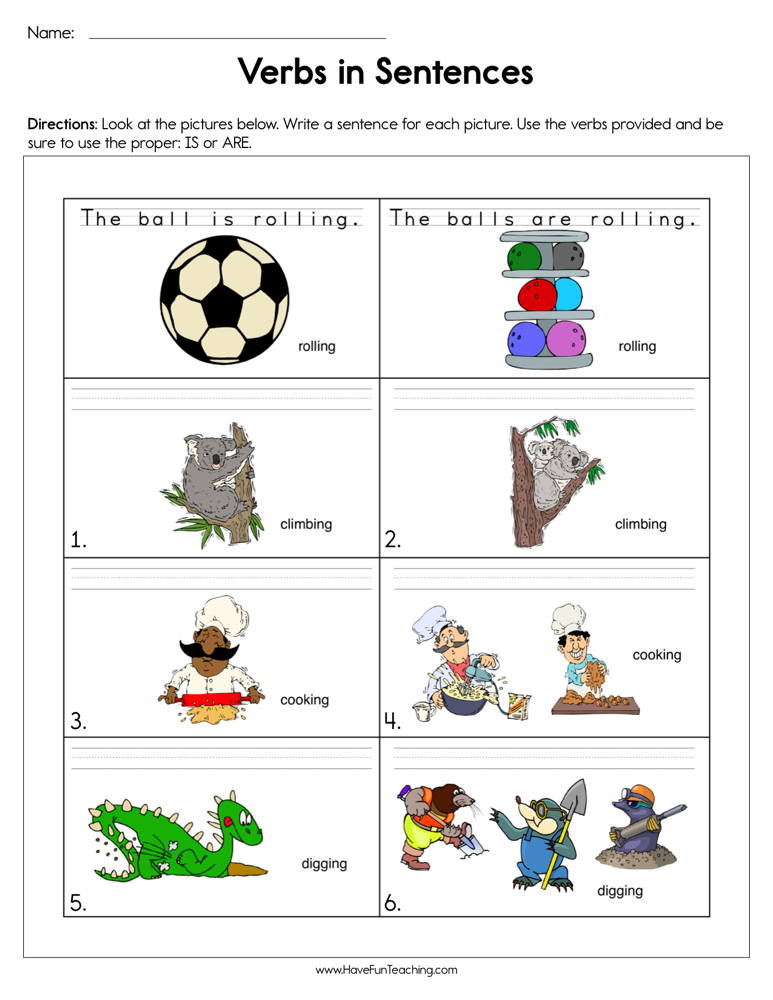 In addition, modal verbs belong to the auxiliary: can, will, shall, may, could, would, should, might and must.
In addition, modal verbs belong to the auxiliary: can, will, shall, may, could, would, should, might and must.
From our article you will learn how to use auxiliary verbs in the main English tenses of the Simple (simple), Perfect (perfect) and Continuous (long) groups. We will also talk about the use of modal verbs.
Auxiliary verbs in Present Simple
The Present Simple (simple present) in English describes something that happens all the time, without reference to the moment. Affirmative sentences in the Present Simple do not require an auxiliary verb. But to ask a question or express a negative in Present Simple, we need an auxiliary verb do/does + main verb.
Consider examples:
| Affirmative offer | Negative offer | Interrogative sentence |
| Dad likes folk music. | Dad doesn't like folk music. - Dad doesn't like folk. | Does dad like folk music? - Does dad like folk? |
| Jenny often goes out alone. Jenny often goes outside by herself. | Jenny doesn't go out alone. - Jenny doesn't go out alone. | Does Jenny ever go out alone? - Does Jenny ever go out alone? |
| Cats eat oranges. Cats eat oranges. | Cats don't eat oranges. - Cats don't eat oranges. | Do cats eat oranges? - Do cats eat oranges? |
promotional code for English lessons at Skyeng
take your promotional code and get to 3 English lessons at our school as a gift
Auxiliary verbs in Past Simple
VO PAST SIMEN English is used to describe events that happened in the past. As in Present Simple, affirmative sentences in this tense do without auxiliary verbs. In case we ask a question or express a negative in the Past Simple, we need a construction from the auxiliary verb did + main verb.
Compare with examples:
| Affirmative offer | Negative offer | Interrogative sentence |
| I liked their latest album. | I didn't like their latest album. - I didn't like their latest album. | Did I like their latest album? - Did I like their latest album? |
| Our country won World War II. - Our country won the Second World War. | Our country didn't win World War II. - Our country did not win the Second World War. | Did our country win World War II? — Did our country win the Second World War? |
| She left her bag at the office. - She left her bag at the office. | She didn't leave her bag at the office. | Did she leave her bag at the office? - Did she leave her bag at the office? |
Auxiliaries in Present Perfect
Present Perfect (also known as present perfect or completed) in English describes an action that comes from the past and continues in the present, or happened in the recent past. The Present Perfect tense is formed as follows: the form of the auxiliary verb have/has + III form of the main verb.
Examples:
- My sister has come back from school. My sister has (already) returned from school.
- Tom has studied for 6 years. - Tom studied for 6 years.

- Mother has cooked the whole day. Mom spent the whole day cooking.
- Jane has just finished doing her homework. Jane has just finished doing her homework.
- I have slept for six hours. - I slept for six hours.
- They have worked on this project for the last two weeks. - They've been working on this project for the last two weeks.
Auxiliary verbs in the Past Perfect
The Past Perfect (past perfect) describes an action in the past that began and ended at a certain moment in the past. Past Perfect is formed as follows: auxiliary verb had + III form of the verb.
Examples:
- We had left home when she arrived.
 - By the time she arrived, we had already left the house.
- By the time she arrived, we had already left the house. - Jane had demonstrated no fright before the airplane took off. Before the plane took off, Jane showed no fear.
- Max finally repaired his car that he had bought two years ago. - Max finally fixed his car, which he bought two years ago.
- The child had broken the toy before his mother paid for that. The child broke the toy (already) before his mother paid for it.
Auxiliary verbs in Present Continuous
Present Continuous (present continuous or continuous) denotes an action that is happening at the moment or will happen in the near future.
It is formed as follows: auxiliary verb to be (am, is, are) + main verb + ending -ing .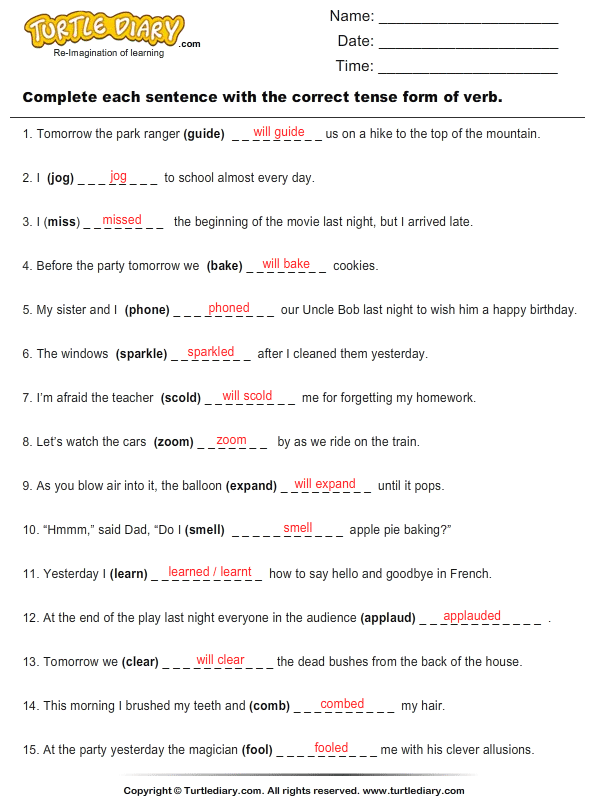
Examples:
- The family is having breakfast now. The family is having breakfast at the moment.
- Jane is preparing for an important exam. Jane is preparing for an important exam.
- I'm going to visit that museum soon. - I'm going to visit this museum in the near future.
- We are going to build a new house soon. - In the near future we plan to build a new house.
Auxiliary verbs in Past Continuous
Past Continuous (past continuous / continuous) denotes an action that continued at a certain point in time in the past. It is formed as follows: auxiliary verb forms to be (was, were) + main verb + ending -ing .
Examples:
- Tom was helping his brother with his homework the whole yesterday evening. Tom helped his brother with his homework all evening yesterday.
- Jane was swimming in the pool for two hours yesterday. Jane spent two hours in the pool yesterday.
- They were trying to repair the car for two hours this morning. This morning they tried to fix the car for two hours.
- We were having our dinner when the neighbor came. - When the neighbor came in, we were having dinner.
Watch a short video about tenses in English to reinforce your knowledge of their education: https://www.youtube.com/watch?v=ULMKfIt95FY.
Auxiliaries modal verbs
Modal verbs can, will, shall, may, could, would, should, might or must can act as auxiliaries. They express modality, that is, the attitude of the speaker to the content of the sentence - whether it is possible, necessary, probable, etc. In such cases, it is not necessary to coordinate the predicate with the subject in person and number.
They express modality, that is, the attitude of the speaker to the content of the sentence - whether it is possible, necessary, probable, etc. In such cases, it is not necessary to coordinate the predicate with the subject in person and number.
Consider the meanings of popular modal verbs in English.
Auxiliary verbs may and might
The verbs may and might are often translated into Russian as “possibly”, “maybe”. If we are talking about events that may take place now or in the future, then these modal verbs are interchangeable:
- She might win the prize = She may win the prize. - She can win a prize.
- She might be home right now = She may be home right now.
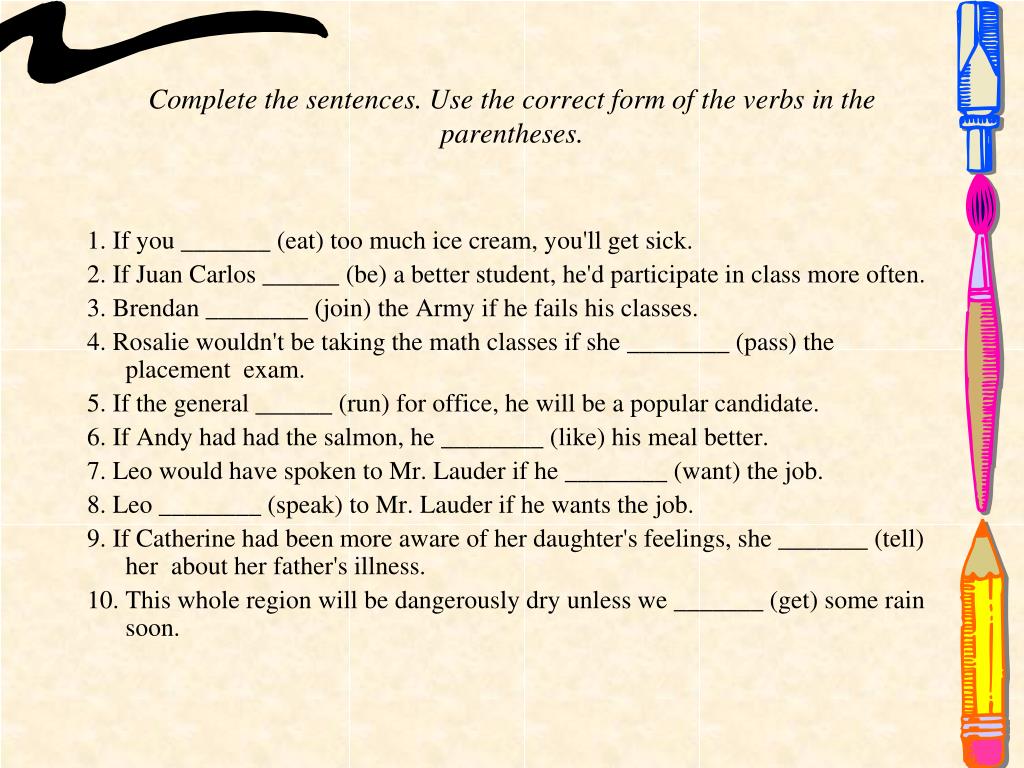 - She may be at home now.
- She may be at home now.
If we are talking about events in the past, then the construction might + the main verb or might have + the main verb in III form is used:
- She might have won that prize if she tried harder. – She would win this prize if she tried hard.
- She said she might win the prize. - She said she could win a prize.
Auxiliary verbs can and could
The modal verb can denotes the ability to perform an action (in general or in the present tense) and is usually translated into Russian as “I can”, “can”.
- Mom can help me with my homework.
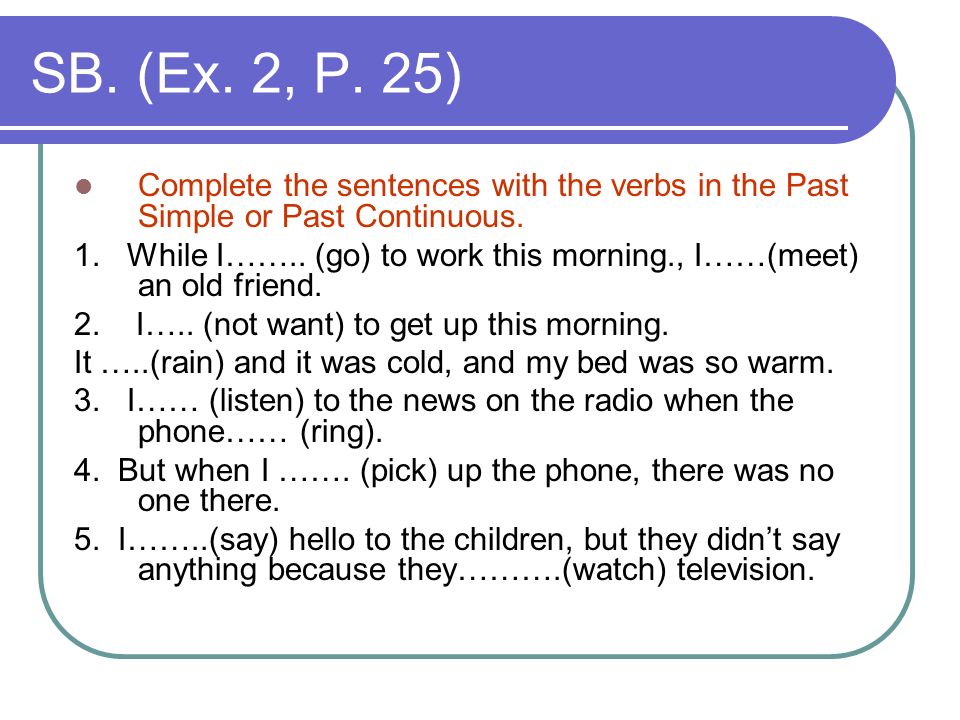 - Mom can help me with my homework.
- Mom can help me with my homework.
could can be used to describe a hypothetical situation (“could”, “could”).
- Mom could help me with my homework. - Mom could help me with my homework.
Describing a hypothetical situation in the past, we use the combination could have + III form of the verb.
- Mom could have helped me with my homework, but she went shopping instead. - Mom could have helped me with my homework, but instead she went shopping.
Auxiliary verb must
Modal verb must expresses duty, duty.
- I must study hard to pass the exams successfully. - In order to pass the exam successfully, I have to study hard.
Speaking of events in the past, we use the construction must have + III form of the verb:
- She must have prepared her evening dress in advance. - She had to prepare an evening dress in advance.
Auxiliary verbs will and would
The modal verb will is involved in the formation of future tenses: from Future Simple to Future Perfect Continuous:
- You will go on the trip this summer. - In the summer you will go on a trip.

The form would is used to match tenses in sentences, for example:
- You said you would go on the trip this summer. - You said you were going on a trip in the summer.
The construction would have + III form of the verb can be used to describe hypothetical situations:
- He would have reached the peak if he had started his climb two days earlier. - If he had started climbing two days earlier, he would have reached the summit by now.
Auxiliary verb should
Modal verb should expresses an obligation, a necessity, but less strict than must .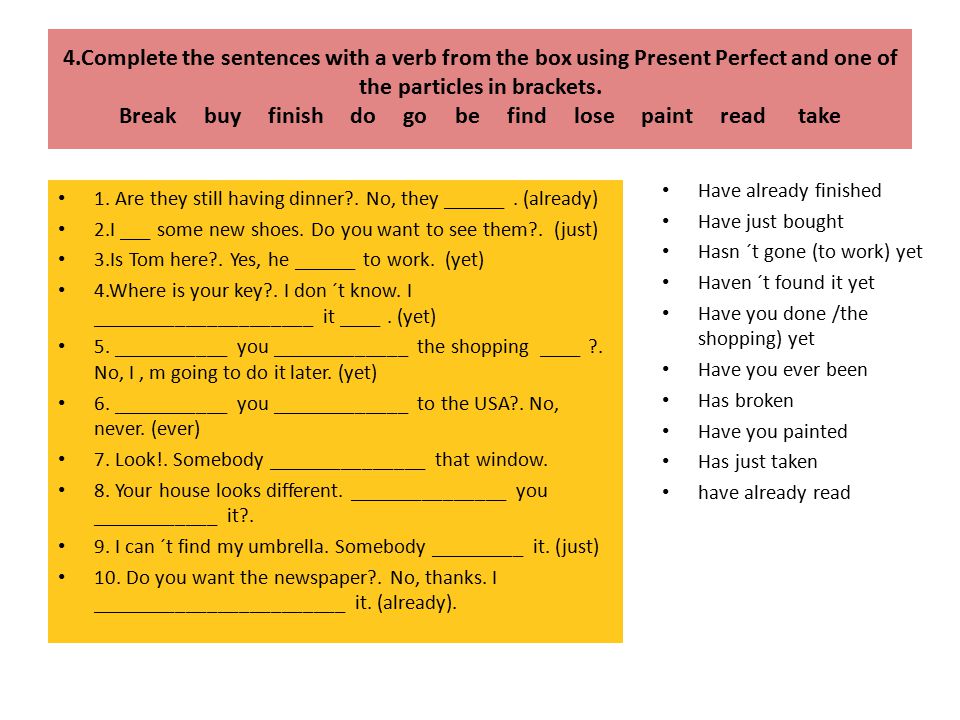 This verb is often used to give advice:
This verb is often used to give advice:
- We should be careful when crossing the street. - We must be careful when crossing the street.
To describe situations in the past, the combination should have + the verb in III form is used:
- We should have been careful when we crossed the street. - We had to be careful when we crossed the street.
A video with Tanya Starikova will help memorize modal verbs and their meanings: https://www.youtube.com/watch?v=lXleGxuVF68.
To summarize
Auxiliary verbs are attached to semantic verbs and serve to form tenses in English. They do not carry meaning, but only express grammatical meaning. We have collected the main tenses and their corresponding auxiliary verbs in a summary table:
| Time | Auxiliary verb | Example |
| Present Simple | do / does | Do cats eat oranges? - Do cats eat oranges? |
| Past Simple | did | I didn't like their latest album. |
| Present Perfect | have / has | I have slept for six hours. - I slept for six hours. |
| Past Perfect | had | We had left home when she arrived. - By the time she arrived, we had already left the house. |
| Present Continuous | am / is / are | Jane is preparing for an important exam. Jane is preparing for an important exam. |
| Past Continuous | was / were | We were having our dinner when the neighbor came. - When the neighbor came in, we were having dinner. |
It should be remembered about modal verbs that they do not change in persons and numbers. They can be used in conjunction with a semantic verb as an auxiliary and express the speaker's attitude to the content of the sentence - for example, how desirable or likely it is.
| Modal verb | Meaning | Example |
| may / might | possibility, probability | She may win the prize. |
| can / could | ability, ability | Mom can help me with my homework. - Mom can help me with my homework. |
| must | obligation | I must study hard to pass the exams successfully. - In order to pass the exam successfully, I have to study hard. |
| will / would | future tense or hypothetical situation | You will go on the trip this summer. |

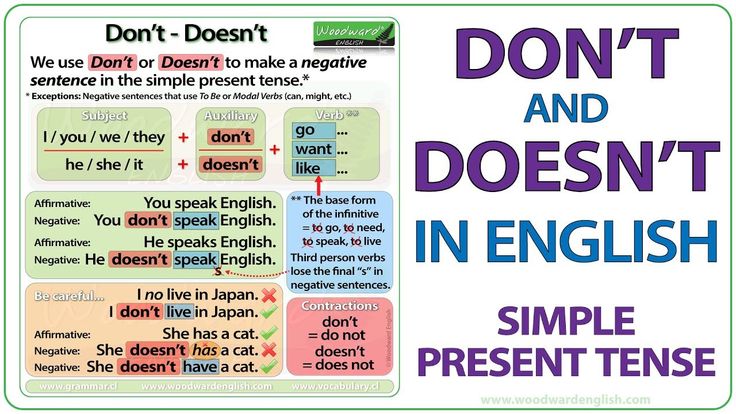 - Dad loves folk.
- Dad loves folk. 
 — I liked their latest album.
— I liked their latest album.  She didn't leave her bag at the office.
She didn't leave her bag at the office.  - I didn't like their latest album.
- I didn't like their latest album. 
 - She can win a prize.
- She can win a prize. 